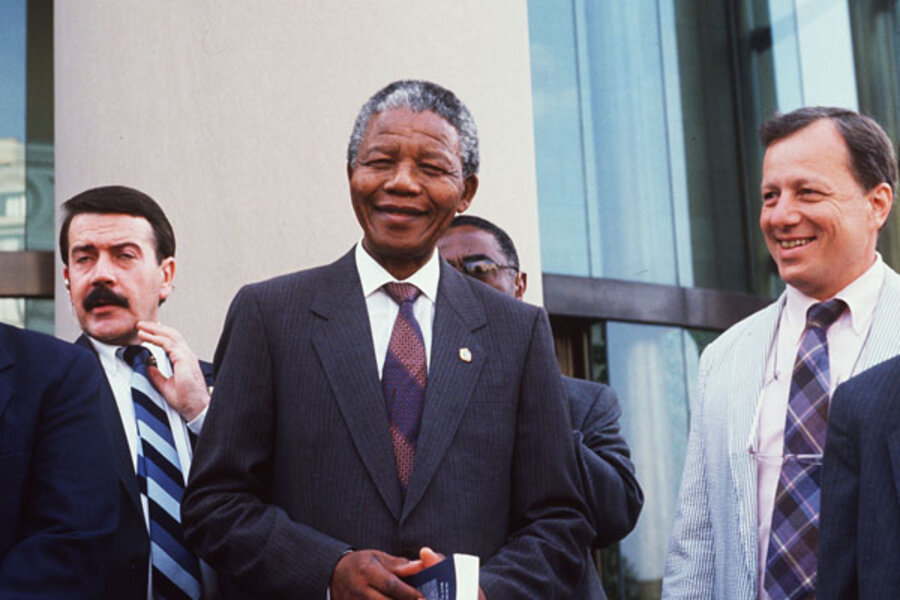Mandela's release from prison in February 1990 marked the beginning of a new and still uncertain era in South Africa. Although the white government had ended its ban on anti-apartheid political organizing and begun speaking with the movement's leaders, no one yet knew how far the reforms would reach. Meanwhile, political violence still gripped much of the country.
Mandela stepped into that fray as a mediator and moral authority, handed the unenviable task of working as a negotiator in a country that hoped to avoid more bloodshed or a civil war.
"Today, the majority of South Africans, black and white, recognize that apartheid has no future," he told the massive crowd who came to greet him at the Cape Town City Hall the day he was released. "It has to be ended by our decisive mass action."
Two days later, he held his first public rally, a massive gathering at a soccer stadium in the Johannesburg township of Soweto. As the Monitor reported that day:
An air of hope and expectation permeates this sprawling township – the home of 2 million black South Africans.
About 140,000 people ... packed Soweto's Soccer City stadium on Tuesday to hear Mr. Mandela's first address to the people of Johannesburg.
For the supporters of the African National Congress (ANC), it was a triumphant moment. But beyond ANC ranks, hundreds of thousands of South Africans – including many whites – were also looking to Mandela for a way out of the quagmire of racial conflict and violence....
"It is discipline and loyalty that will liberate us," he told the biggest political rally in the country's history.... "It is only disciplined mass action that assures us the victory we seek."
Three days later, Monitor correspondent John Battersby sat face-to-face with Mandela in a tiny garden behind his Soweto home to discuss his plan for the country's future. In no uncertain terms, Mandela made clear that despite his release, the African National Congress and other liberation organizations would not end their armed struggled against apartheid until the government agreed to their terms.
"You must be careful of being more worried about the violence that comes from the oppressed and saying little – or nothing at all – about the violence that comes from the government," he said. "They [the government] have closed all channels of communication. They have intensified the pressures. What does the world expect us to do in that situation?"








